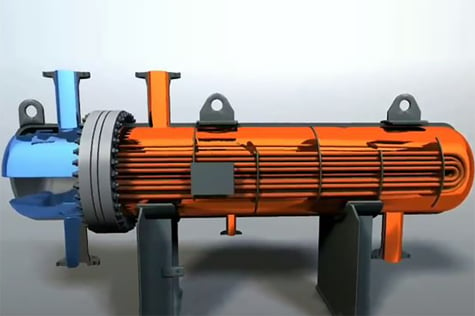
Heat Exchanger Flow Arrangement
We have been posting some “behind-the-scenes” and educational information about Heat Exchangers, how they work, what is the science behind them, and so forth. Today we'll take a look at “flow arrangement” and how we classify flow arrangement when fabricating our Heat Exchangers.
When it comes to flow arrangement, there are two primary classifications of heat exchangers: parallel-flow heat exchangers and counterflow heat exchangers.
In parallel-flow heat exchangers (at left), the two fluids enter the exchanger at the same end, and travel in parallel to one another to the other side.
In counter-flow heat exchangers (at right) the fluids enter the exchanger from opposite ends. The counter current design is the more efficient design, in that it can transfer the most heat from the heat (transfer) medium.
For efficiency, heat exchangers are designed to maximize the surface area of the wall between the two fluids, while minimizing resistance to fluid flow through the exchanger. The exchanger’s performance can also be affected by the addition of fins or corrugations in one or both directions, which increase surface area and may channel fluid flow or induce turbulence. In a cross-flow heat exchanger (at left), the fluids travel roughly perpendicular to one another through the exchanger.
In a cross-flow heat exchanger (at left), the fluids travel roughly perpendicular to one another through the exchanger.
The driving temperature across the heat transfer surface varies with position, but an appropriate mean temperature can be defined. In most simple systems this is the “log mean temperature difference” (LMTD). Sometimes direct knowledge of the LMTD is not available and the NTU (Number of Transfer Units) method is used.
Learn more about heat exchangers, engineering, flow arrangement and the services we offer by clicking in the tags below.
